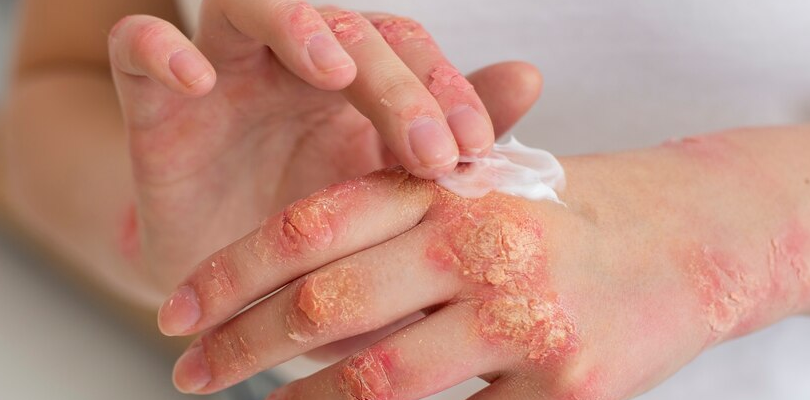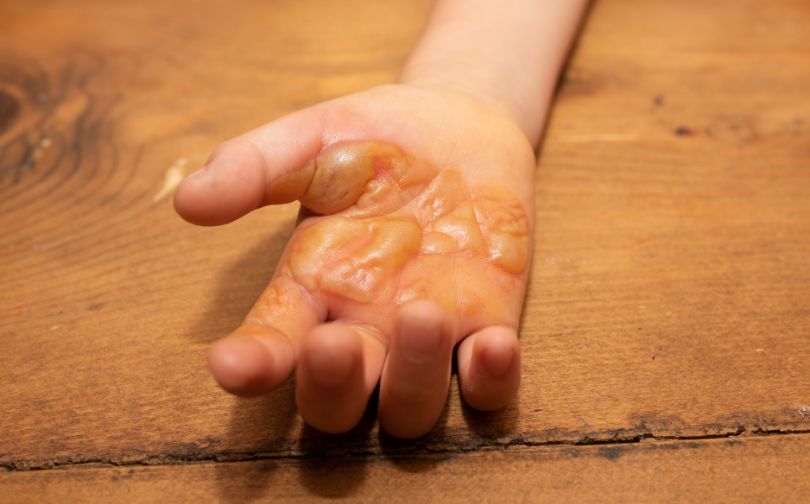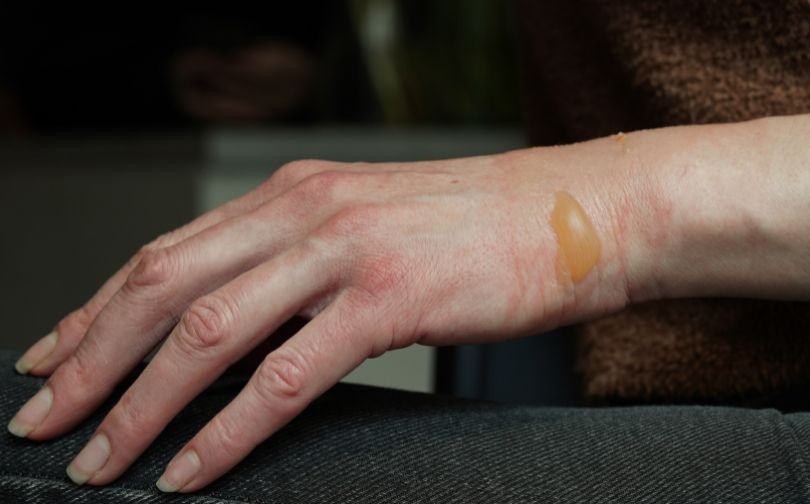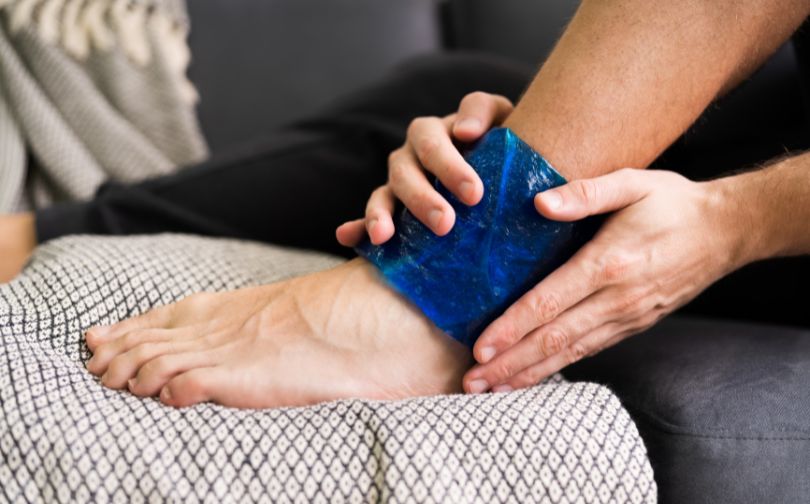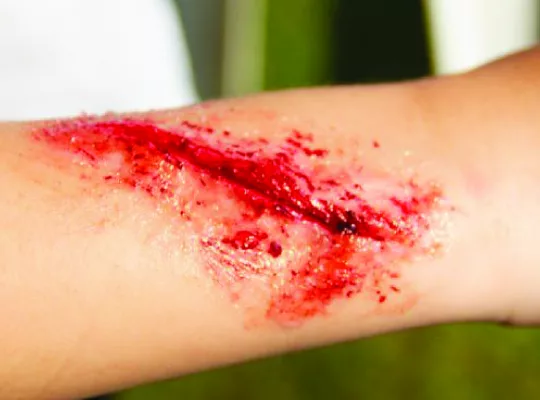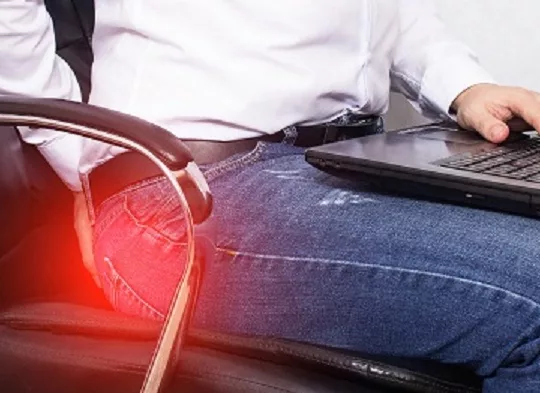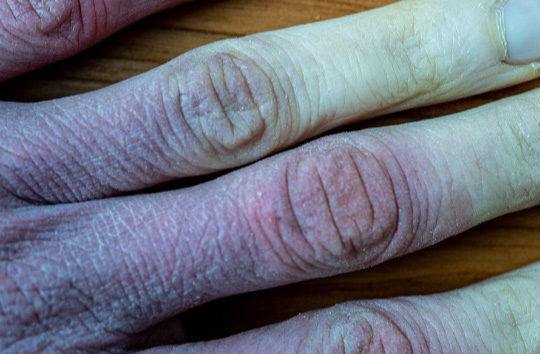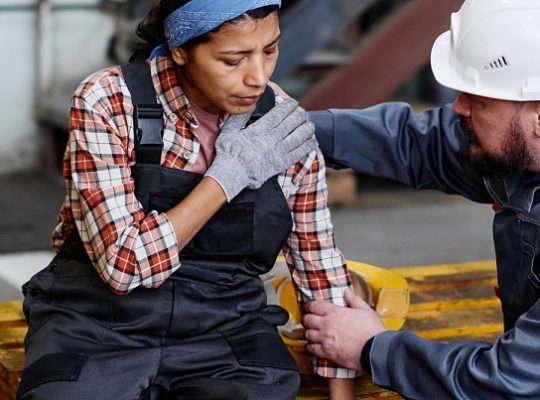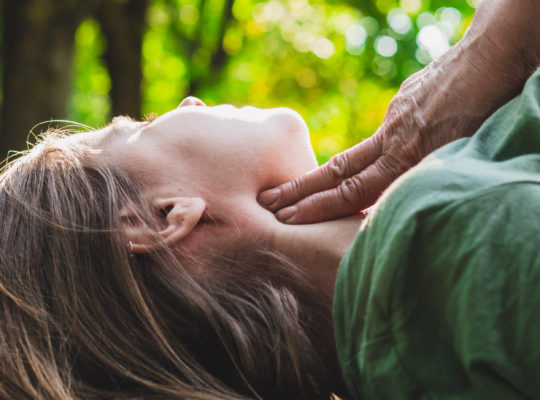A burn blister on your finger can be more than just a painful inconvenience. It hampers simple tasks like typing, cooking, or even gripping objects, making daily life frustrating. The discomfort and swelling can leave you wondering how long you’ll have to endure this setback.
Burn blisters typically form as a protective shield over damaged skin, signaling the body’s effort to heal. While they’re a natural part of the recovery process, their presence can raise concerns about proper care and potential complications.
Did you know that the healing time largely depends on the burn’s severity and how well it’s managed? With the right steps, minor burn blisters can heal in a few days, but deeper burns might take longer.
In this guide, we’ll explain how long a burn blister on your finger may last, discuss effective care methods, and help you ensure a smooth recovery.
What are Burn Blisters?
Burn blisters are tiny bubbles filled with clear liquid beneath the skin that are the body’s natural response to protecting injured areas. They’re unlike the blisters you get from rubbing or pinching your skin; instead, these appear after second-degree burns from heat, chemicals, frostbite, or sunburn.
Understanding burn blisters is vital for proper care. There are three types of burns, each needing different attention.
- First-degree burns affect only the outer skin layer and might not cause blisters.
- Second-degree burns go deeper and usually lead to immediate blistering.
- Third-degree burns are the most severe, reaching deep into the skin, and may or may not result in blisters.
Treatment for burn blisters depends on the severity of the burn. Simple home remedies can help mild burns, while more serious ones require medical attention. Keep an eye on those blisters, especially for signs of infection, as even minor damages can become big problems if they’re not taken care of. If a burn looks bad or worsens, seeing a doctor immediately is essential to avoid complications and ensure proper healing.
Types of Burns
Burns come in different degrees, each requiring specific care. First-degree burns are the mildest, affecting only the outer layer of the skin. These typically don’t result in blisters and can often be managed at home with simple remedies.
Second-degree burns are more serious, reaching both the outer and underlying layers of the skin. These injuries commonly lead to blister formation and should be treated promptly. While some second-degree burns can be managed at home, others may require medical attention.
Third-degree burns are the most severe. They penetrate deeply into the skin, affecting its deepest layers. Unlike first and second-degree burns, third-degree burns may not produce blisters. Due to their severity, third-degree burns always necessitate immediate medical care to prevent complications and promote proper healing.
How to Treat a Burn Blister on a Finger?
Treating a burn blister on your finger requires prompt action and gentle care to ensure healing and prevent complications. The first step is to cool the burn immediately. Place the affected finger under cool (not cold) running water for 10 to 15 minutes. This helps reduce pain and halt the burning process. If running water is unavailable, you can apply a clean, cool, damp cloth to the area. Avoid using ice or extremely cold water, as this can cause further damage to the skin.
It’s crucial not to pop the blister, no matter how tempting it may be. The fluid inside the blister acts as a natural barrier, protecting the skin underneath from infection and aiding the healing process. Before treating the area, wash your hands thoroughly with soap and water to avoid introducing bacteria. Gently clean the surrounding skin with mild soap and water, taking care not to irritate the blister.
After cleaning, apply a thin layer of antibiotic ointment, such as Neosporin, to the blister. This helps prevent infection and keeps the skin moisturized. Keeping a Burn Care Kit on hand ensures you have essential supplies, like antiseptic wipes, gauze, and healing ointments, ready for immediate treatment. Cover the area with a sterile, non-stick bandage or gauze to protect it from friction or contamination. Make sure the adhesive doesn’t touch the blister itself, as this could cause irritation.
It’s important to change the bandage daily or anytime it becomes wet or dirty. During each dressing change, reapply the antibiotic ointment to keep the area clean and hydrated. Be mindful to monitor the blister for signs of infection, such as increased redness, swelling, warmth, pus, or worsening pain. If any of these symptoms occur, seek medical attention promptly.
Allow the blister to heal naturally by avoiding activities that may put pressure on or irritate the affected finger. If the blister bursts on its own, clean the area gently, apply antibiotic ointment, and cover it with a fresh bandage. For larger burns, severe pain, or signs of infection, consult a healthcare professional. With proper care, most burn blisters heal within a week, leaving your skin protected and healthy.
What Not to Do?
Do not apply ice directly to the burn. Ice can cause further skin damage and worsen the injury.
- Avoid using cotton or fluffy fabrics to cover the burn. These materials can stick to the wound and cause irritation.
- Do not apply butter, oils, or anticavity toothpaste. These can trap heat in the skin and lead to infection.
- Avoid peeling off dead skin around the blister. This exposes raw skin to bacteria and delays healing.
- Do not expose the blister to direct heat or sunlight. This can aggravate the injury and cause additional pain.
- Refrain from using adhesive bandages directly on the blister. The adhesive can stick to the wound and cause further damage when removed.
- Don’t neglect hand hygiene. Failing to wash your hands before touching the blister increases the risk of infection.
- Avoid wearing tight gloves or rings over the blister. Pressure or friction can cause the blister to burst prematurely.
What Makes Finger Blisters Different Than Others?
Burns on the fingers and hands present unique challenges due to these body parts’ vital role in daily activities. Unlike other burns in less active areas, finger and hand burns can significantly disrupt daily life. They can stop one’s ability to perform many tasks since people use their hands throughout the day.
Finger and hand injuries can often be uncomfortable and inconvenient. They can also potentially impede work and leisure activities until fully healed. Tasks such as typing, cooking, or even dressing oneself can become painful or impossible with burned fingers or hands. These limitations can lead to frustration and a loss of independence.
Moreover, a burn on the palm of the hand, one of the most sensitive areas of the human body, can be particularly challenging. The palm’s sensitivity means that burns in this area may cause heightened pain and discomfort. Additionally, deep burns can damage neurons and receptors, leading to long-term sensory issues.
Even after the burns have healed, individuals may experience a loss of sensation or altered sensitivity. This prolonged impact on sensory function underscores the importance of prompt and thorough treatment, especially when it comes to finger and hand burns. This helps prevent long-term complications and optimize recovery.
Furthermore, the nature of hand and finger burns can prolong the healing process. The hands’ complex structure includes tendons, ligaments, and joints, and all need to be monitored carefully in the case of a hand burn.
Deep burns may need extensive medical intervention, including skin grafts or physical therapy. These help restore function and prevent permanent damage.
Meanwhile, the psychological toll of hand and finger burns should not be overlooked either. Beyond the physical discomfort, individuals may experience emotional distress. This includes anxiety or depression stemming from the loss of functionality and independence. Adapting to life with hand or finger burns may need coping strategies and support. If needed, individuals should seek help from healthcare professionals, family, and friends.
Finger and hand burns pose distinct challenges due to their impact on daily activities, sensitivity, and potential for long-term sensory impairment. Prompt and comprehensive treatment is essential to mitigate these challenges, minimize complications, and support individuals in their journey to recovery and rehabilitation.
Summary
The duration of a burn blister on the finger depends on how severe the burn is and how well it’s treated. Superficial burns heal faster, while deeper ones take longer, mainly if they cause large blisters. It’s essential to watch for signs of infection and seek medical help.
Burns on the fingers and hands are particularly challenging because we use them for many things. They can make daily tasks difficult and cause long-term discomfort or sensitivity, especially on the palms. The structure of the hands can also complicate treatment and recovery. Sometimes, requiring medical intervention.
Fingers and hands need careful attention and treatment to heal correctly. They can affect daily life and may need support for both physical and emotional recovery. Prompt treatment and monitoring are crucial for the best outcome.
FAQs
What Should I Do If My Burn Blister Pops?
If a burn blister pops naturally, clean the area gently with mild soap and water. Apply an antibiotic ointment, and cover it with a sterile, non-stick bandage to reduce infection risk. Monitor for infection signs, such as redness or swelling, and consult a doctor if needed.
How Can I Treat a Burn Blister at Home?
Cool the burn under lukewarm water for 10-15 minutes, then gently pat dry. Apply aloe vera or petroleum jelly to soothe and protect the skin. Cover with a sterile bandage, avoiding any pressure. Do not pop the blister, and watch for infection signs like pus or swelling.
When Should I See a Doctor for a Burn Blister?
See a doctor if the burn is extensive, shows signs of infection (redness, pus, fever), or affects sensitive areas like the face, hands, or joints. Immediate medical attention is also necessary if the burn is caused by chemicals, electricity, or if healing doesn’t progress.
What Are Signs That My Burn Blister Is Infected?
Signs of infection include increasing pain, swelling, redness, pus discharge, fever, or red streaks radiating from the blister. If any of these symptoms occur, seek medical help promptly to prevent further complications and ensure proper treatment.

